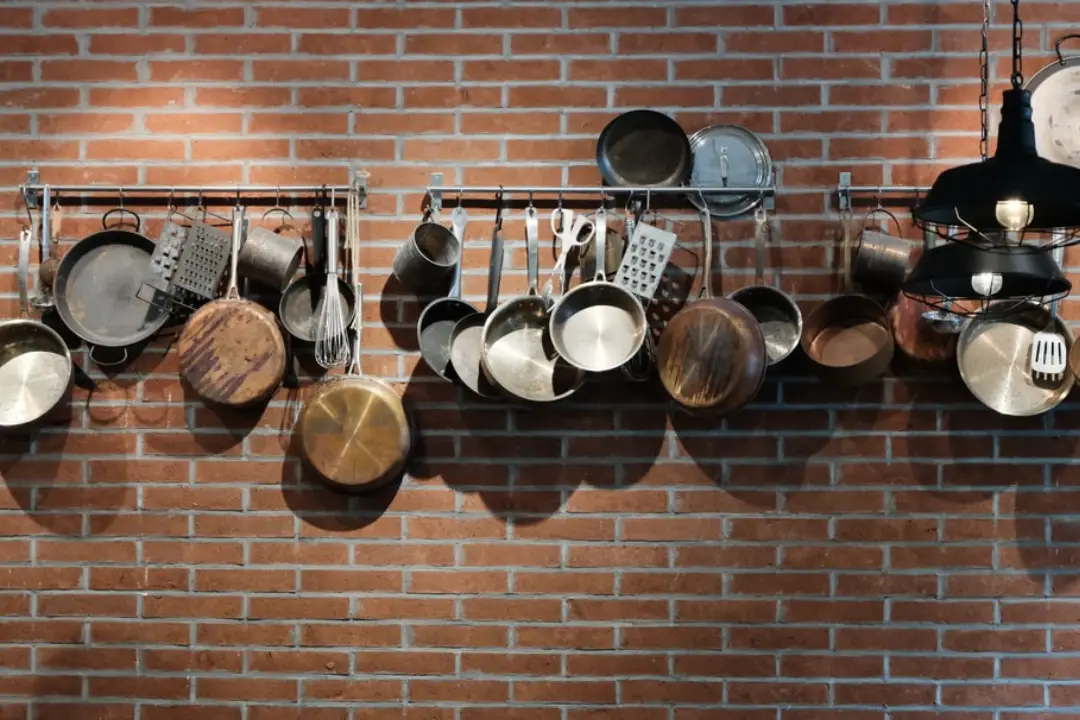Last Updated on March 20, 2024 by Share My Kitchen
What does it mean to season pots and pans? You may have heard that a lot of chefs will prefer a well-seasoned metal cooking vessel over a new one. Most likely, a restaurant kitchen has several soiled pots and pans. Chefs and cooks love these as they are. These have been “seasoned” with high heat and cooking fat over time.
This does not only protect the surface of the pot or pan from deterioration like rust, but it also adds wonderful flavor to the dishes while using less fat since the seasoned coating makes it effectively nonstick. Natural nonstick pans are free from harmful chemical treatments to avoid having food stuck on them. Moreover, seasoned pans are easy to clean. Most cooks will also not allow their seasoned saucepans to be washed with soap. Let’s look closer at the practice of preserving pans and pots.
What Cookware Can Be Seasoned?
Usually, people want to season pots and pans, and woks. Clay cookware can also be seasoned in some cultures. These are some of the most commonly seasoned commercial cooking vessels:
- Cast iron skillets and Dutch ovens
- Carbon steel sauté pans, paella pans, and woks
- Aluminum or coated tin cake and pizza pans
There are many opinions on whether or not it is necessary for stainless steel pots and pans to be seasoned. Stainless steel is naturally resistant to rust and corrosion. So, in theory, the material does not require seasoning to protect it from deteriorating. However, some cooks use stainless steel equipment in the same way as carbon steel to guarantee a nonstick surface.
What Types of Fat Are Best Used to Season Pots and Pans?
Seasoning pots and pans require some form of fat. There are many opinions about the best type of fat to use for this. The process happens at high heat, so it is important to use grease or oil that can tolerate high smoke points. But make sure that it can still penetrate the metal surface for good seasoning. Vegetable shortening is another option. It is inexpensive, and relatively tasteless, and it can be used frequently.
Mediterranean-style chefs prefer to use low-acid olive oil to season their pans. This ensures that the flavors remain true to their style of cooking. When cooking Asian or tropical fare, coconut oil is a great choice for seasoning pots. Avocado oil and refined peanut oil have a high smoke point. It really all depends on your preference for flavor and overall cost.
Basic Methods to Season Pots and Pans
Prior to seasoning pots and pans for the first time, make sure they are thoroughly cleaned in hot soapy water. This will remove any protective wax, machine oil, or packaging residue. Then, rinse the pan with clean hot water, and dry off any excess water.
There are two basic ways to properly prepare cookware for seasoning:
Season Pots and Pans In a Hot Oven
First, use a very hot oven. This works best for aluminum, cast iron, and tin pans and pots. Preheat the oven to 400°F, and put a foil-lined baking pan on the lower rack. Then, use a crumpled piece of clean paper towel to coat the pan with the oil or shortening. The handle does not need to be coated. Put the skillet or pan on the top shelf of the oven, and let it bake for about 50 minutes for cast iron skillets and 18 minutes for aluminum or tin plates. Next, turn the oven off, and let the pan cool down enough for you to handle it. Use clean paper towels to wipe the oil from the still-warm vessel.
Season Pots and Pans Over a High Heat
The second way is to place them on the ranger top over a hot burner. This seasoning method is great for carbon steel cookware, woks, and broader pots that may not fit into an oven. Put the clean cookware over medium-high heat until it begins to smoke. Then, use tongs to dip a piece of paper towel in oil or shortening, and coat the inside of your pan. Turn the heat up to high to allow the fat to melt completely. It will smoke again, so make sure your kitchen is well ventilated. Take the hot, newly seasoned pan away from the burner, and allow it to cool down slightly. However, not entirely. Then, wipe it with a clean paper towel to remove the excess oil.
Maintaining Seasoned Cookware
After the pans and pots have been seasoned, these will take on more flavors and will be more protected as they are used. Again, a lot of cooks don’t wash these pans. So, to maintain a seasoned pan or pot, you should clean it under running water and use a sponge or soft cloth to get rid of any residue. It is also easier to clean seasoned pots or pans while they are still warm.
Apply a thin layer of oil or fat on the interior once the pan has been wiped clean and dried off. Then, place the lightly oiled vessel back into a hot oven or on top of a burner until it becomes warm. Use a paper towel to remove any excess oil. Add a little table salt to the oil and wipe it off if there is food stuck on the pan. The salt will loosen food particles without removing the protective layer of the pan.
It is acceptable to clean your cookware with soap and scrubbing pads to remove any burned food. Also, make sure you season your pots and pans according to the instructions before you use them again.
Furthermore, it is recommended that seasoned pans and pots are stored stacked on top of each other. You should place a piece of paper towel underneath and inside the pan to prevent disturbing or tainting the protective layer if you are storing them in contact with other materials.


